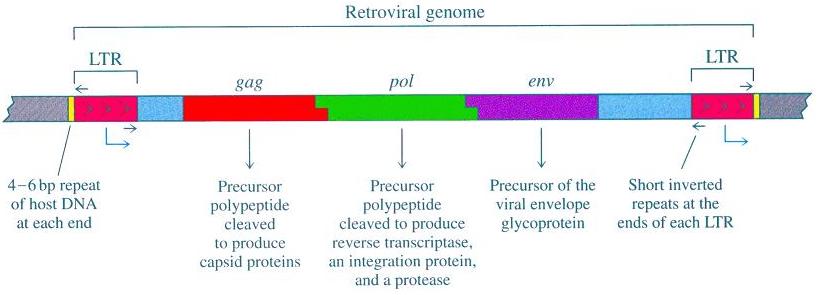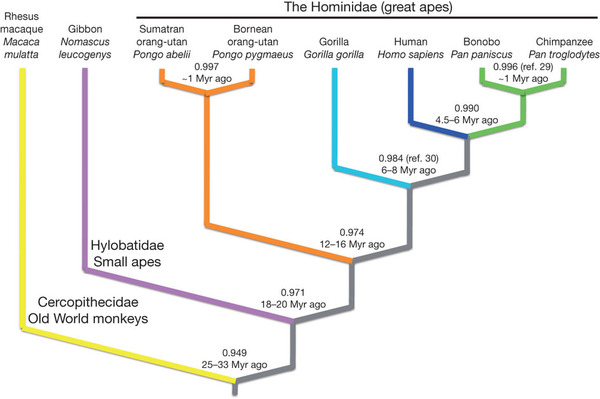As I said, those were just possibilities. Maybe not good ones.
The point is that unless it can be proven how and when they
got there, you have theories, and specifically, theories that
exclude the possibility that they were created.
Theories don't exclude possibilities. In fact, all other possibilities are part of the null hypothesis. Scientists put just as much effort into disproving their theories as they do proving them (beyond a reasonable doubt).
What I think you fail to understand is just how much extra effort it would take to make ERV's and other genetic markers to look like they evolved. It isn't simply a matter of copying an ERV from one species and throwing it in anywhere in the other species. For example, the retroviral genome has a feature at either end called an LTR which stands for long terminal repeat. They are like bookends.
When the virus inserts it's genome into the host genome, it copies one LTR to make the other LTR. This means that the LTR's have identical sequence at the time when the retrovirus becomes and ERV.
From the distribution of a specific ERV among species we can predict how long an ERV has been in a lineage. Here is the phylogeny for Hominidae.
If an ERV is found at the same location in orangutans, chimps, gorillas, and humans, then that ERV had to insert before orangutans branched off. If an ERV is shared just by chimps and humans, then the insertion had to happen much more recently.
Using the theory of evolution we can determine how long an ERV has been part of a lineage. If that prediction is correct, then older ERV's should have accumulated more mutations than younger ERV's. We can determine this by comparing the LTR's. Since we know that they were identical at the time of insertion, we can compare the two LTR's to see how many mutations have accumulated.
So what happens when we compare the number of mutations from the predicted age of the insertion? They match up. ERV's that are shared by a large number of primate species have more mutations in the LTR's than ERV's that are shared by relatively few primate species. This is the pattern we would expect from evolution.
In order for this to be the product of separate creation events, the designer would need to go through and meticulously change the LTR's so that they produce the same phylogeny. The designer would need to do this for hundreds of thousands of ERV's, making sure that they produce the same phylogeny. A designer could give baboons and humans the same ERV with identical LTR's while give all other primates an ERV at the same location but with very different LTR's. There is absolutely nothing stopping a designer from doing so. So why would a designer produce a fake phylogeny when there is no reason to do so?



